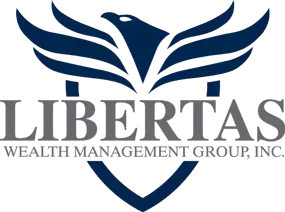The Value of Multi-Generational Family Meetings
If you’ve amassed a sizable nest-egg, or at least you’re on the right path and getting there, it may be time to consider how to pass on some of that money to your family, doing so without creating big problems that could harm their futures and destroy family harmony.
The fact is, family wealth (and how it’s managed, transferred and utilized) can generate major drama among family members. As wealth grows, so does the potential for that money to create conflicts and worse… bad financial decisions that can reduce a family’s financial position – or even ruin intra-family relationships forever. Sadly, in the 22 years we’ve been in business, it’s something we’ve witnessed a few times, and it’s always due to lack of proper planning.
The good news is, we can steal some strategies used by today’s ultra-wealthy families to avoid (or even mitigate) such negative outcomes, and discover methods to adopt similar strategies in our own families.
One of the most effective tools harnessed by the ultra-affluent is the family meeting, which is used to educate heirs and potential heirs about sound financial decision-making, to identify shared family financial values, and to maintain (and grow) family wealth in a unified, cohesive manner.
Family meeting benefits and advantages
Family meetings can help avoid the thorny problems that can arise when inheritors who receive substantial assets lack the proper preparation and education to manage the money prudently.
Regular family meetings can also help families keep their wealth together and intertwined, which can have major advantages such as:
· Being able to access certain types of high-minimum investments
· Leveraging a larger fortune to lower the cost of financial advice and services
The underlying objectives are family cohesiveness, superior management of the family’s future across the generations, and the preservation and growth of the family wealth.
The family meeting primarily provides a venue for multiple generations to discuss financial matters. Common topics covered at well-run family meetings might include any of the following:
- Promoting financial literacy in future inheritors.
- The family’s investment philosophy.
- Philanthropic values and activities, and how they are financially supported.
- New business ventures and how to fund them.
Meetings like this are where a family’s values and mission are discussed, debated, and honed. In many cases, family meetings are great settings to plan the action steps needed to prepare the next generation for family leadership roles and often, the end result is greater feelings of cohesiveness, trust, and support among family members of various generations.
FOUR STEPS TO A SUCCESSFUL FAMILY MEETING
Step #1: Planning the meeting
The starting point is specifying the goals for the family meeting. The more specific and refined the goals, the better. An agenda based on those goals should be created, outlining what is to be discussed and what decisions can hopefully be made. Based on the nature of the topics on the agenda, supporting material might be required (such as the financials of the family business or the performance of the family’s investment portfolio).
Often, the planning part will be shared and rotated among various members from meeting to meeting. When it’s your turn, be sure to get input from all family members who will be involved. By taking suggestions from everyone into account, the family is more likely to achieve the desired group results.
Add some fun! Many families also include fun activities as part of their family meetings… such as golfing, a family volleyball game, or a wine/beer-tasting event. These bonding moments are nice on their own, but they also help promote a better meeting.
Step #2: Conducting the meeting
The focus of the family meeting should be the goals and agenda. Therefore, it is usually wise to mitigate day-to-day distractions. For example, it wouldn’t be a terrible idea to hold the meeting at a resort or a tucked-away family property – essentially, any place where interruptions would be limited.
The most effective meetings tend to have an outside professional (a neutral third party) involved as a facilitator. This individual will help address the more complicated and difficult issues and keep the discussions on track and focused on the end goals and action steps. The facilitator also helps ensure that all family members are involved and contributing, and can help mitigate conflicts that may arise.
The types of third-party professionals commonly serving in this role include:
- Attorneys and accountants,
- Wealth managers and multifamily office senior executives,
- Family business consultants and life coaches, or
- A combination of the above.
Step #3: Follow-up actions
Typically, a set of action-based tasks results from a family meeting. These activities often need to be turned into formal projects, with milestones and clear expectations about who will be accountable for specific steps. The third-party facilitator or family members can be responsible for mapping out how to follow up after the family meeting. It is also worthwhile to specify how the subsequent actions will be tracked and reported back to the family.
Step #4: Assessment of outcomes
Once we have a set of goals in place, along with a list of actions or projects that need to be taken to achieve those goals, the final step entails determining the degree of success attained.
Based on the assessment of the outcomes, new actions are identified in order to help reach the stated goals. These can be a refinement of current actions or a different approach entirely. Moreover, the results achieved always factor into the goals and agenda for the next family meeting.
Keep in mind: While I probably don’t need to mention this, every family has its own special dynamics and traits. Thus, you can expect to modify the process described above, all depending on the culture, make-up, and goals of the family at hand.
If you have more questions about this concept, please reach out and ask! Aside from playing the role of facilitator for some of our clients over the years, I also have other professionals on my “success team” who have been a part of multi-generational family meetings as well… CPAs, fractional CFOs, attorneys, and even a life coach – all of whom I’d be happy to introduce you to!
Otherwise, it’s been a pretty rocky out there… with all the noise in financial apps, TV, and radio, if you’d like a second opinion on your retirement plan and investment portfolio, please reach out to us! You can respond to this message, or CLICK HERE to take the first steps to answer a few questions and get an intro call set up on our calendar.
‘till next time!
Adam

